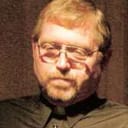Stay in the Loop
BSR publishes on a weekly schedule, with an email newsletter every Wednesday and Thursday morning. There’s no paywall, and subscribing is always free.
Change without challenge
The Annenberg Center and NextMove Dance present Parsons Dance

NextMove finished up its 2018-2019 season this month with the New York City-based Parsons Dance, presenting a retrospective of several shorter works mostly by founder and principal choreographer David Parsons, whose work is appealing but has not gained substance over the years.
The program, which was untitled, presented five short Parsons pieces spanning his entire career, from 1982 to 2018. The program was fleshed out by a piece originally choreographed in 1975 by Parsons’s onetime mentor, choreographic legend Paul Taylor.
Evolution without invention
The various pieces made for an interesting display of the artist’s evolution over his 30-plus-year career—not necessarily a good evolution, I’m afraid. What I witnessed was an artist who has perfected the craft of pleasing his audience but whose work has become progressively less inventive and challenging.
With this in mind, it was no surprise that the older pieces were the most interesting. The flashiest piece was also the oldest and briefest: “Caught” from 1982. This was performed by a single male dancer (the impressively athletic Zoey Anderson) on a completely darkened stage, illuminated only by a series of strobe flashes and the occasional center-stage spotlight. The choreography and the strobes were timed to create the illusion that Anderson was floating around the stage in midair. The piece was visually dazzling, to be sure, but clearly the work of a young choreographer intent on impressing his audience with technical flash, not substance.
Another example of Parsons trying to be clever was “Hand Dance” from 2003. In this, the ensemble of five dancers also performed on a darkened stage, with only their hands illuminated. It was cute, amusing, and a clever crowd-pleaser, but a bit of a trifle.
More sophisticated was a much more recent piece, 2012’s “Round My World.” While not particularly inventive, this piece showed a mature Parsons’s mastery of grace and form. The ensemble of six dancers were well synchronized, and while the choreography was not especially challenging, it was nicely controlled and mostly pleasing to the eye.
Beyond crowd-pleasing
Perhaps the most challenging piece, and certainly the longest, was the one piece not by Parsons: Paul Taylor’s “Runes” from 1975, restaged for Parsons Dance by Cathy McCann Buck. This was a somber, serious piece utilizing the entire ensemble of eight dancers. Its subtitle, “Secret Writings for Casting a Spell,” was true to an overall effect that was quite mysterious and mystical. The dancers executed a series of sophisticated patterns evocative of Druidic rituals, ranging from athletically acrobatic to subtly nuanced.
There’s no question regarding the skill and talent of the ensemble. Their execution was flawless and certainly crowd-pleasing. There’s also no question that Parsons knows how to satisfy his audience. But in the final analysis, there wasn’t much in the program that was truly memorable.
What, When, Where
Parsons Dance. Choreography by David Parsons and Paul Taylor. Presented by NextMove Dance and the Annenberg Center. May 10 and 11, 2019, at the Annenberg Center’s Zellerbach Theatre, 3680 Walnut Street, Philadelphia. (215) 898-3900 or annenbergcenter.org.
The Annenberg Center accommodates the needs of individuals with physical disabilities. Details are available online. The Annenberg has a gender-neutral restroom.
Sign up for our newsletter
All of the week's new articles, all in one place. Sign up for the free weekly BSR newsletters, and don't miss a conversation.

 Gary L. Day
Gary L. Day